-
Posts
1,781 -
Joined
-
Last visited
-
Days Won
8
Content Type
Profiles
Forums
Blogs
Gallery
Events
Store
Posts posted by azyeoman
-
-
The medals all look the same and like you I believe 100% of the time that it's the story that counts! Wonderful job on research on these men.
0 -
Ayz....101and the other are actually Bulgarian.
OOps you're right. Thanks!!!
Hello to everyone,
I am not sure this bar fits into this category. It is my understanding that this Order of the White Elephant was issued until 1940. I would appreciate any information anyone has.
Dean
Love this bar. Congrats to you. Wish I could help, but alas....
0 -
Thanks Les for posting this info.
0 -
Very nice! Please keep 'em coming. Thanks,
John
0 -
Hi I assume it's the guy in the foreground. Nice to see that military tradition is still upheld, and I assume a very uncommon event, (Is this the same as the Congressional medal of Honour?, excuse my ignorance) any idea what he did to deserve the award?.
regards
Alex
Yes, it's the man in the foreground who received the Congressional Medal of Honor. The citation shows he deserved it. http://www.army.mil/medalofhonor/romesha/citation.html
Staff Sergeant Clinton L. RomeshaUnited States Army
For conspicuous gallantry and intrepidity at the risk of his life above and beyond the call of duty:
Staff Sergeant Clinton L. Romesha distinguished himself by acts of gallantry and intrepidity at the risk of his life above and beyond the call of duty while serving as a Section Leader with Bravo Troop, 3d Squadron, 61st Cavalry Regiment, 4th Brigade Combat Team, 4th Infantry Division, during combat operations against an armed enemy at Combat Outpost Keating, Kamdesh District, Nuristan Province, Afghanistan on October 3, 2009. On that morning, Staff Sergeant Romesha and his comrades awakened to an attack by an estimated 300 enemy fighters occupying the high ground on all four sides of the complex, employing concentrated fire from recoilless rifles, rocket propelled grenades, anti-aircraft machine guns, mortars and small arms fire. Staff Sergeant Romesha moved uncovered under intense enemy fire to conduct a reconnaissance of the battlefield and seek reinforcements from the barracks before returning to action with the support of an assistant gunner. Staff Sergeant Romesha took out an enemy machine gun team and, while engaging a second, the generator he was using for cover was struck by a rocket-propelled grenade, inflicting him with shrapnel wounds. Undeterred by his injuries, Staff Sergeant Romesha continued to fight and upon the arrival of another soldier to aid him and the assistant gunner, he again rushed through the exposed avenue to assemble additional soldiers. Staff Sergeant Romesha then mobilized a five-man team and returned to the fight equipped with a sniper rifle. With complete disregard for his own safety, Staff Sergeant Romesha continually exposed himself to heavy enemy fire, as he moved confidently about the battlefield engaging and destroying multiple enemy targets, including three Taliban fighters who had breached the combat outpost’s perimeter. While orchestrating a successful plan to secure and reinforce key points of the battlefield, Staff Sergeant Romesha maintained radio communication with the tactical operations center. As the enemy forces attacked with even greater ferocity, unleashing a barrage of rocket-propelled grenades and recoilless rifle rounds, Staff Sergeant Romesha identified the point of attack and directed air support to destroy over 30 enemy fighters. After receiving reports that seriously injured Soldiers were at a distant battle position, Staff Sergeant Romesha and his team provided covering fire to allow the injured Soldiers to safely reach the aid station. Upon receipt of orders to proceed to the next objective, his team pushed forward 100 meters under overwhelming enemy fire to recover and prevent the enemy fighters from taking the bodies of their fallen comrades. Staff Sergeant Romesha’s heroic actions throughout the day-long battle were critical in suppressing an enemy that had far greater numbers. His extraordinary efforts gave Bravo Troop the opportunity to regroup, reorganize and prepare for the counterattack that allowed the Troop to account for its personnel and secure Combat Outpost Keating. Staff Sergeant Romesha’s discipline and extraordinary heroism above and beyond the call of duty reflect great credit upon himself, Bravo Troop, 3d Squadron, 61st Cavalry Regiment, 4th Brigade Combat Team, 4th Infantry Division and the United States Army.
0 -
Hi Brian,
Glad you like it. Brett's a gentleman and a scholar and posts some interesting things himself. I look forward to seeing your collection!
All the best,
John
0 -
You can find interesting information on this site about Stalag IVB.
0 -
Memorial at the site of Stalag IVB followed by the cemetery at Neuburxdorf.
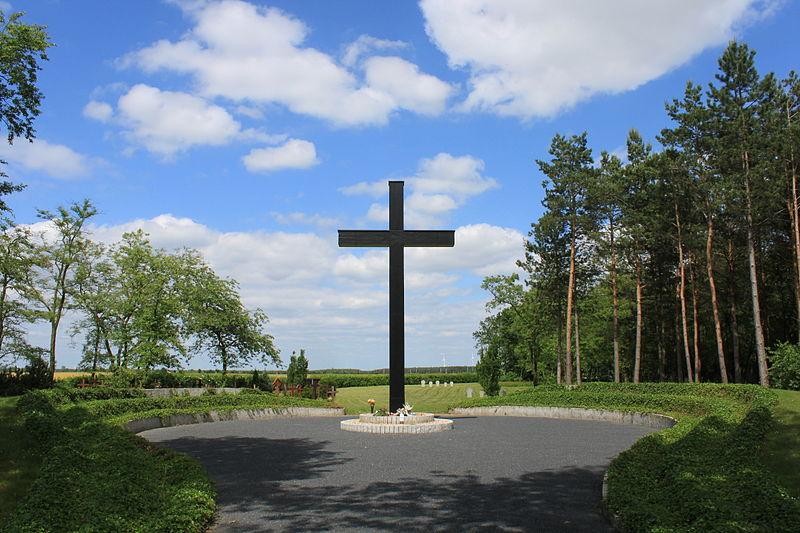
 0
0 -
Wartime photos of Stalag IV-B.
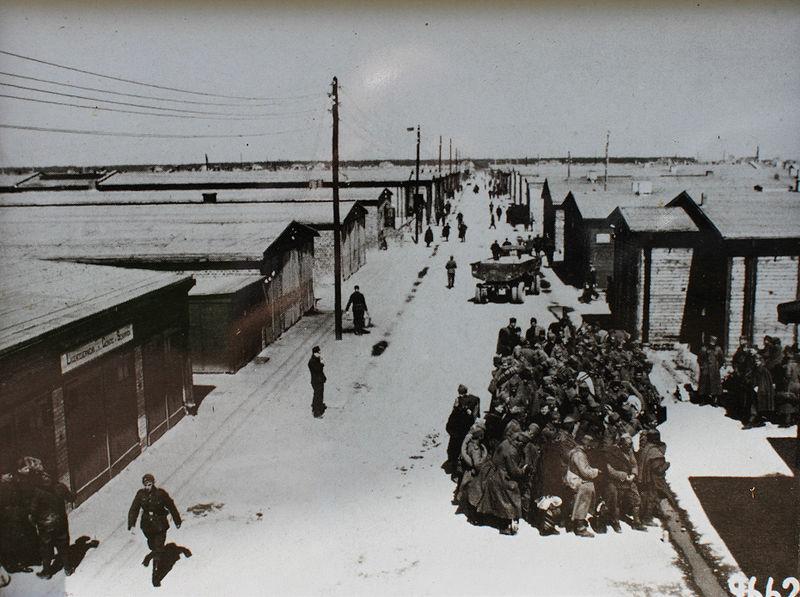
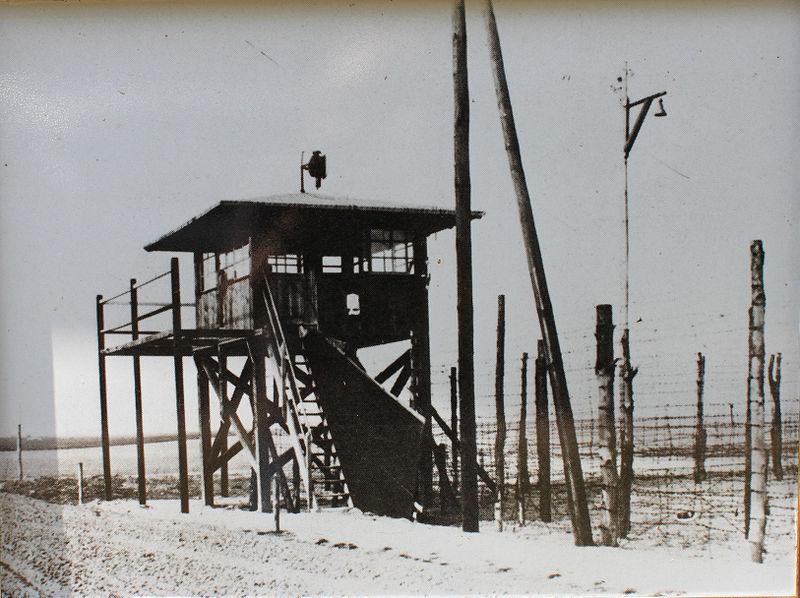
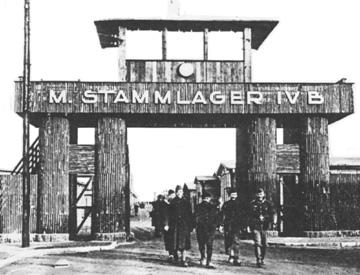 0
0 -
A group for a PoW from the first battle of El Alamein.
6009188 Cpl. (later Sgt.) C.A. Balls, 1/4th Essex Regiment (taken prisoner at El Alamein on 1/7/42, initially held in Campo 70 (Monteurano, near Fermo Ascoli Piceno) and later reported seeing prisoners shot at Stalag 4B). The 1st/4th Bn. Essex Regt. was part of the the 5th Indian Infantry Brigade commanded by Brig. Dudley Russell, which was in the 4th Indian Division under Major General Francis Tucker.
Stalag IV-B was one of the largest PoW camps in Germany during WWII. Stalag is an abbreviation of the German Stammlager ("Main
Camp"). It was located 8 km (5.0 mi) north-east of the town of Muhlberg in Brandenburg, just east of the Elbe river and about 30 mi (48 km) north of Dresden. A sub-camp, sometimes identified as Stalag IV-B/Z, was located at Zeithain, 10 km (6.2 mi) to the south in Saxony. The camp, covering about 30 hectares (74 acres), was opened in September 1939. The first inmates were about 17,000 Polish soldiers captured in the German September 1939 Offensive. For the first two months they lived under the open sky or in tents. Most of them were transferred to other camps. In May 1940 the first French soldiers arrived, taken prisoner in the Battle of France. In 1941 Australian, British and South African soldiers arrived after the fall of Tobruk, and later in the year Russian POWs from the invasion of the Soviet Union. In October 1944 several thousand more Poles arrived, members of the Armia Krajowa ("Home Army") captured after the Warsaw Uprising, including several hundred women soldiers. In November 1944 the Polish women were transferred to other camps, mainly Stalag IV-E in Altenburg and Oflag IX-C at Molsdorf. At the end of December 1944 about 7,500 Americans arrived from the Battle of the Bulge and At least 3,000 of them were transferred to other camps, mostly to Stalag VII-A. On 23 April 1945 the Red Army liberated the camp. Altogether soldiers from 33 nations passed through the camp.
Interestingly, the British prisoners published two periodicals: the wall newspapers The New Times and a richly illustrated Flywheel. The Flywheel was founded by Tom Swallow, and comprised pages from school exercise-books that carried hand-written articles with colour illustrations from whatever inks the editorial team could produce from stolen materials, like quinine from the medical room; these were stuck into place with fermented millet soup, kept from the meagre camp rations. One copy per issue was produced, to be circulated among members throughout the camp. When extracts were published in hardback format in 1987, the book ran to two reprints. An additional periodical, The Observer was published between December 1943 and May 1944. The camp's Welsh soldiers also created their own periodical called Cymro ("Welshman"), edited by prisoner William John Pitt. The magazines were produced between July 1943 and December 1944. Eight issues of the magazines were created, and out of these one was lost in the camp. Although most of the issues are in English, two pages are in Welsh
Tom Shallows obituary: http://www.independent.co.uk/news/obituaries/tom-swallow-founder-of-flywheel-magazine-781058.html
When the Soviet Army arrived at the camp in April 1945, there were about 30,000 PoWs crowded into the facilities, of these 7,250 were British. About 3,000 died, mainly from tuberculosis and typhus. They were buried in the cemetery in neighboring Neuburxdorf, Bad Liebenwerda; there is a memorial and a museum commemorate them today. The Soviet liberators were in no hurry to repatriate the British and American prisoners to their homelands. In fact they were held in the camp for over a month. Some individual soldiers "escaped" from the camp and made their way on foot to the American lines. In August 1945 the Soviet secret service NKVD opened on the area of Stalag IV-B its Special Camp No. 1, using the shacks of Stalag IV-B. More than 22,800 persons were imprisoned and over 6,700 of them died until the camp was closed in 1948.
1939 Star, Africa Star, War Medal and TFEM GVI - Territorial - 1st type to 6009188 Cpl. C. A. Balls, Essex Regt.
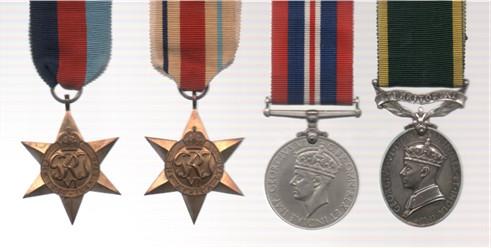 0
0 -
Sgt. Clinton Romesha will be awarded the Medal of Honor on 11 February 2013.
 0
0 -
A couple photos of the badge being worn.
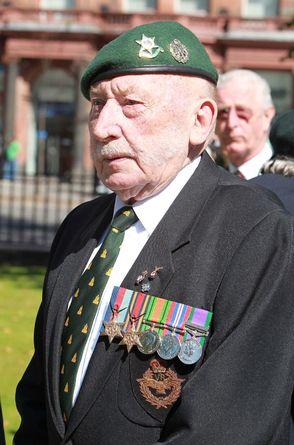
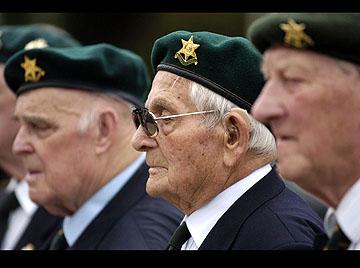 0
0 -
Surely someone else has a photo of a British medal bar with another tailor label on it. If so, please post as a reference. Thanks. : )
0 -
I'm sure these are minted rather than made from Burma Stars. Yes, it's a cap badge for vets; photos to follow.
0 -
Very interesting. I've not seen a photo of that; can you post one? : )
Cheers!
0 -
An unusual apparently older Burma Star Association badge.
The Burma Star Association is a British veterans' association for ex-servicemen and women of all services who served in the Burma Campaign during World War II. The criterion for membership is the award of the Burma Star for service in Burma during World War II for the necessary qualifying period or the Pacific Star with Burma Clasp.
The Association was first formed on 26 February 1951 to promote comradeship and the welfare of its members. The arduous nature of the Burma Campaign has been recognised by permission granted to members to wear a replica of the Burma Star in a lapel badge and cap badge.
The Association's Patron is Prince Phillip , the Duke of Edinburgh and its President is John Slim, 2nd Viscount Slim and the son of Bill Slim, who commanded the 14th Army in Burma.
For more info on the organization, go to:

 0
0 -
That's a great story. Next time you see him, ask him if it's personal taste or according to the regulations to wear them. : )
0 -
A couple of more modern postwar FEPOW badges.
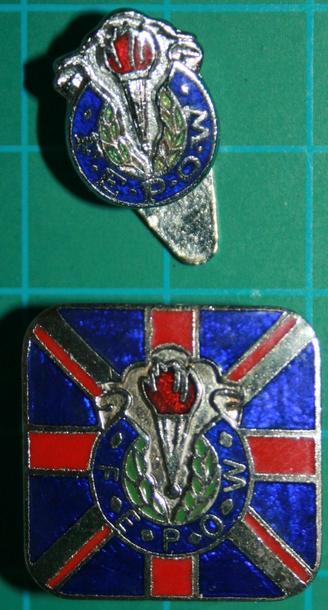
 0
0 -
Just found this North Staffordshire Prisoner of War Comforts Fund Badge, which resembles the one above from Leicester.
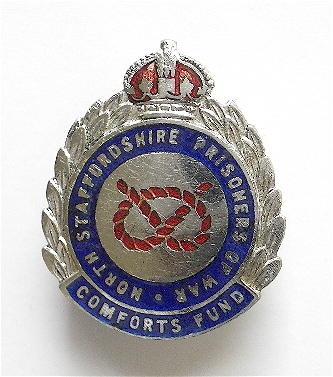
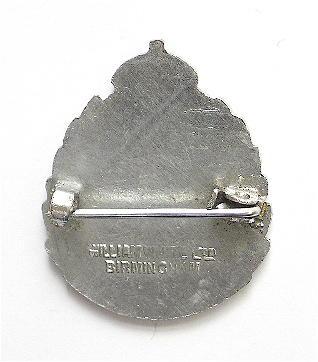 0
0 -
A nice tailors label for
Max Kust
Berlin C.2.
Niederwallstr. 32.
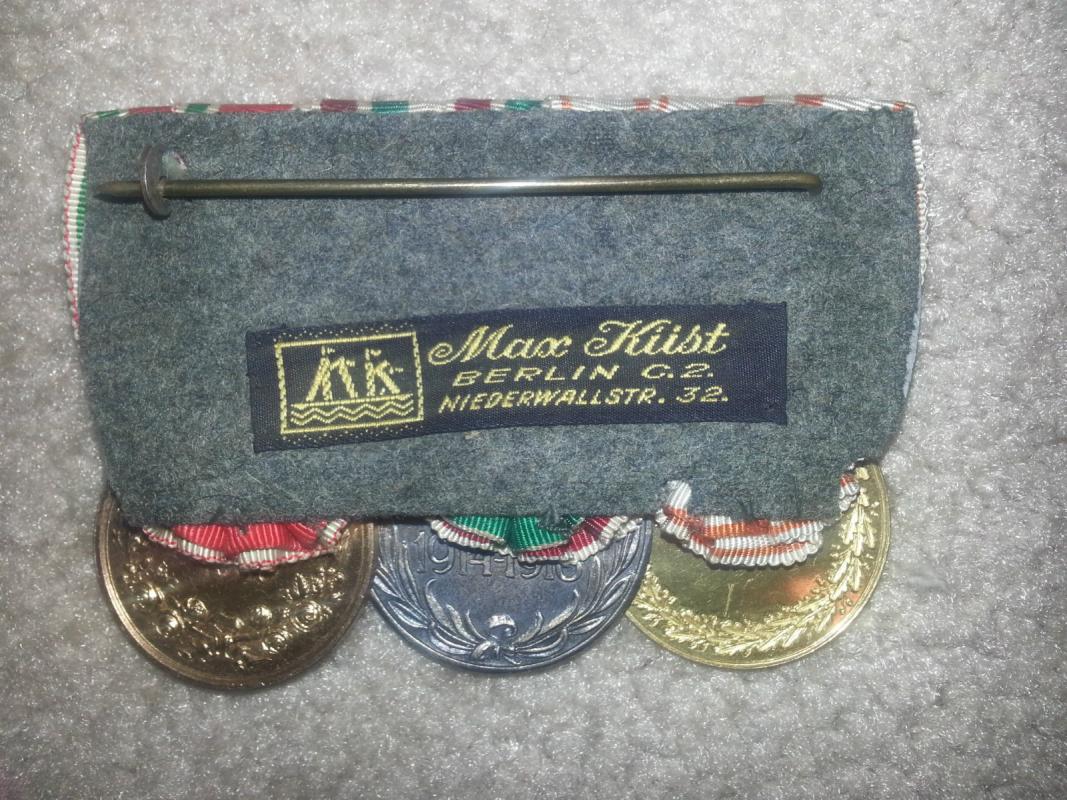 0
0 -
Not sure what you are looking for here with regards to Victorian ribbons.....
Do you mean Victorian enamel ones?????
Yep. : )
0 -
Here's a thread on German ones too; different style and quality enamel work, but very interesting nonetheless. Does anyone know enough about enamel to explain the process and why some are translucent while others are "milky" for lack of a better expression?
http://gmic.co.uk/index.php/topic/2866-enamel-ribbon-bar/
0 -
The USA has them too. Here's a Philippine Campaign Medal enamel ribbon bar and I've seen Purple Hearts with oak leave cluster ones as well. Has anyone seen any Victorian campaign medal ribbons or "enamel" groups represented in bars? Please post if you have any.
Cheers,


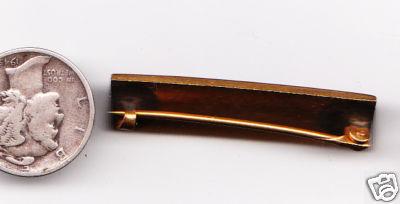 0
0 -
What a wonderful display!!! What is the medal/badge with the red ribbon in the middle and to the left of the insignia? Were you able to find photos of him as a student at your school? I love the touching statement by his granddaughter.
On another subject, is it possible to say that all 1914 Stars to S. Africans would have been for GSWA? Thanks. John
0



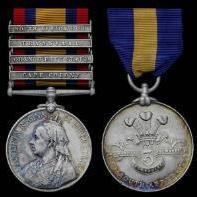
US Museum of American History in DC
in United States of America
Posted
A great place to visit and see amazing historical artifacts and it's free!
George Washington's uniform, epaulettes and sword.